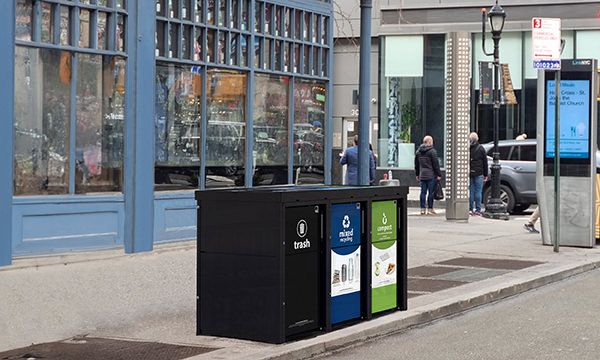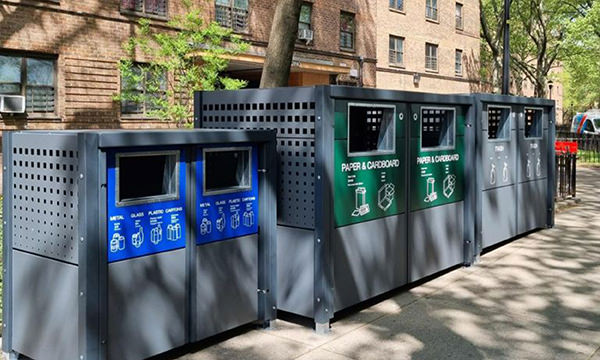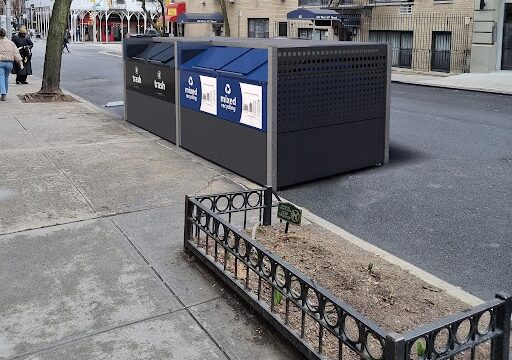

Trash & Dumpster Enclosures Designed to Take Garbage Containerization to the Next Level
U.S. recycling statistics for 2023 have shown that around one-third of all waste across the nation is recycled. While there is still some way to go to meet zero-waste targets for 2030, over the past 60 years, America has successfully increased its recycling rate from just 6.4% (1960) to over 32%.
Demand for recycling is increasing, and containerization plays a big part in that. Most of the American population are very familiar with the concept and its ability to improve public health, restrict food sources for vermin, and reduce the unsightly visual appearance of garbage in public spaces that acts as a detriment to both the environment and a city streetscene.
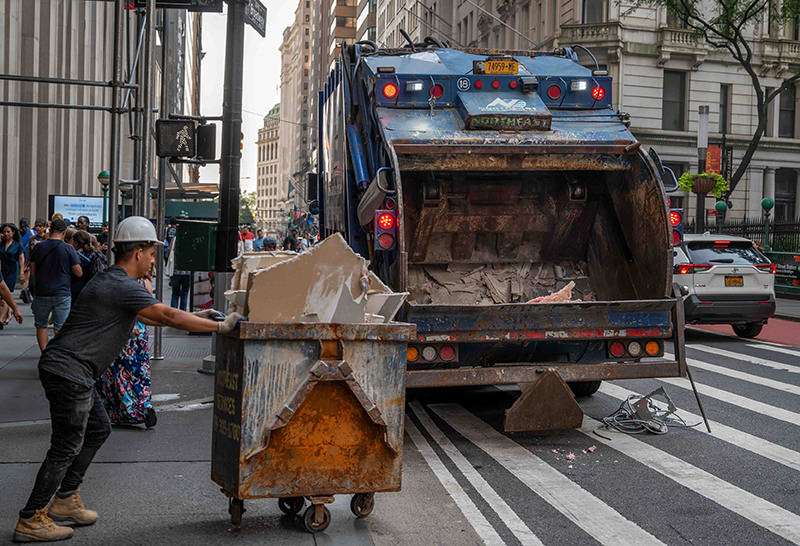
As a system of waste management, however, introducing containerization initiatives can be relatively complex and challenging. It isn’t as straightforward as installing trash carts and dumpsters in on-street locations and expecting residents and members of the public to automatically use them correctly. New York City’s large-scale ongoing efforts to containerize as much of the city’s trash as possible provide the most appropriate case study for this. During 2023, several distinct projects have been developed across residential, commercial and public housing locations as part of this shared vision by the DSNY, Office of the Mayor, New York City Housing Authority (NYCHA), and private haulers.
For containerization to be successful and optimal in its functionality, the system requires attention to detail in aspects like infrastructure compatibility, residential densities, operational considerations, and a critical understanding of human behavior, as well as the specific benefits and drawbacks of containerization models.
Depending on the density of the public and residential environment, containerization models vary in terms of design, form, and functionality. An understanding of how differing containerization models are utilized in different settings can be drawn from major European cities, where waste containerization has developed into a standard practice for over 2 decades in order to meet diverse community requirements.
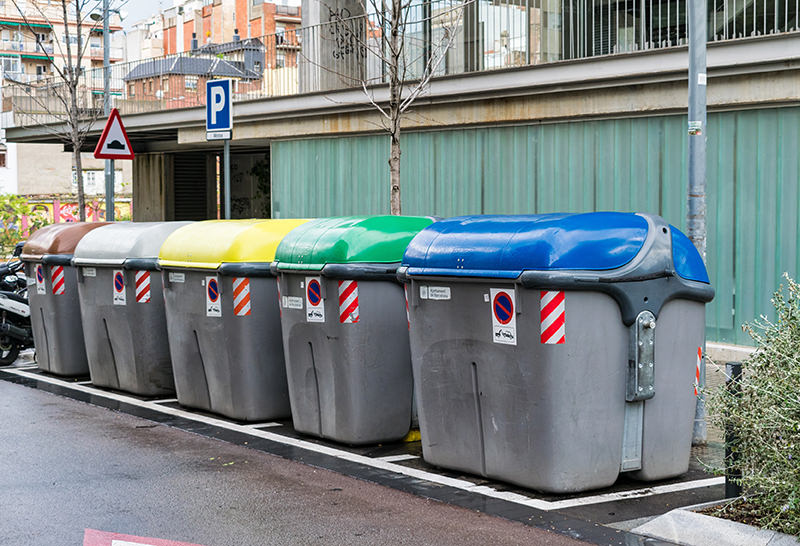
Typically more compatible for single-family households and low-density neighborhoods, individual caddies provide one set of bins for each waste generator covering trash, recyclable materials and organics, depending on the municipality. They can serve a significant number of households over a large area, and implementation requires little behavioral change. Distributing multiple roll-out caddies for households, however, can create problems in of itself. Those with mobility restrictions can face difficulty placing their bins curbside, putting constraints on collection programs, while improper return of bins post-collection can lead to obstructions and lead to potential litter on sidewalks.
In contrast, shared containers provide an effective solution for higher-density neighborhoods. They can be installed in central locations and will typically offer higher storage capacity, with a single point of collection meaning more waste can be collected in less time. However, a degree of visual impact does need to be considered. Stationary units are a permanent fixture and can take up a notable degree of curb space, with increased collection frequencies often necessary in high-density areas to mitigate restrictions on continual usage.
Typically, trash and dumpster enclosures are designed to provide screening of a specified number of containers or dumpsters within a given footprint. While this approach might help conceal some of the negative side effects of garbage containerization, such as side waste and untidy dumpsters, to take the concept to the next level, modern requirements mean that traditional trash & dumpster enclosures need to offer more as waste management infrastructure.
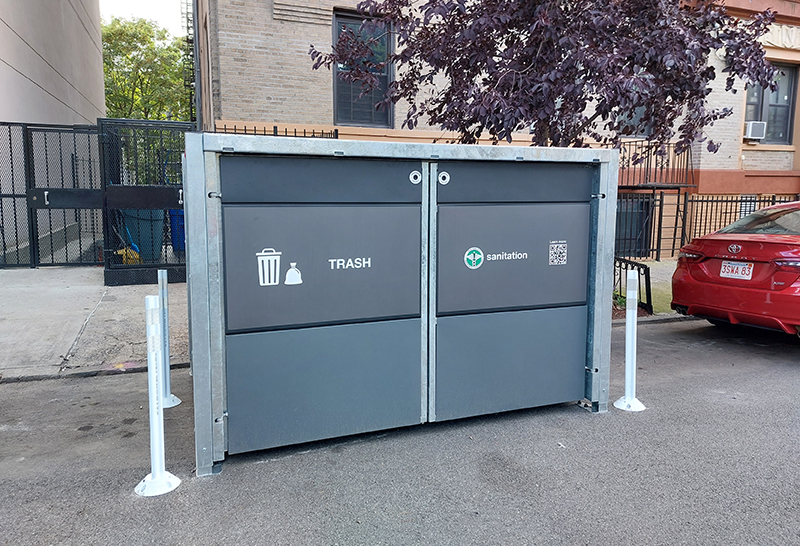
To deliver consistent waste and recycling infrastructure that improves accessibility, produces a reduction of trash overage, and enhances recycling rates through better separation of waste streams, the design of successful enclosure systems needs to provide visual appeal, integrate clear guidance and beneficial messaging, and offer easy integration into prominent on-street locations.
Integration of these factors will, in turn, provide municipal organizations and local communities with opportunities to ensure visual improvement of the streetscene and drive user-engagement within local community environments, while supporting waste diversion targets and long-term goals of achieving zero waste status.
Informing all product design at metroSTOR, the 5C methodology can be readily applied towards garbage containerization in order to establish how trash & dumpster enclosures can enhance the overall concept, considering specific elements of capacity, convenience, communication, consistency and cleanliness, in order to address waste diversion and contamination targets at local community and regional levels.
To take garbage containerization to the next level, metroSTOR has developed a series of on-street enclosure systems. Housing carts & dumpsters individually to optimize storage capacity, they provide a highly effective, modular solution for the storage of organics, recycling, garbage, and bulky waste between collections; supporting multi-stream waste diversion strategies within a given, compact footprint.
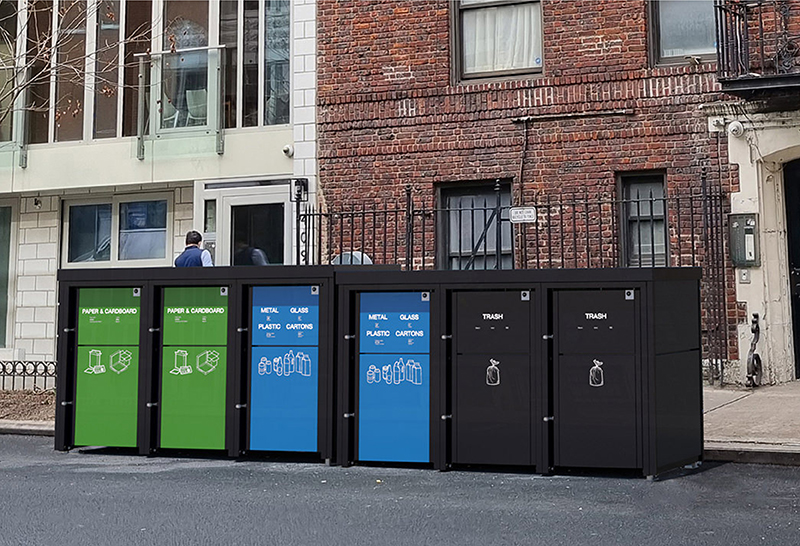
Ideal for use in multifamily, commercial or municipal drop-off centers, containers are secured and enclosed with the use of restricted apertures that enable users to place trash and recyclables directly into the container, eliminating requirements to handle unsanitary bin lids, one of the primary contributing factors behind side waste accumulation.
This element of secure containment can be enhanced further with the integration of access control systems, helping to prevent unauthorized use. By making it as simple as possible for users to engage with the facility appropriately, metroSTOR enclosure systems encourage good waste management and recycling practice from users, supported by clear communication and simple color coding to ensure waste materials are separated effectively and deposited into the correct container.

